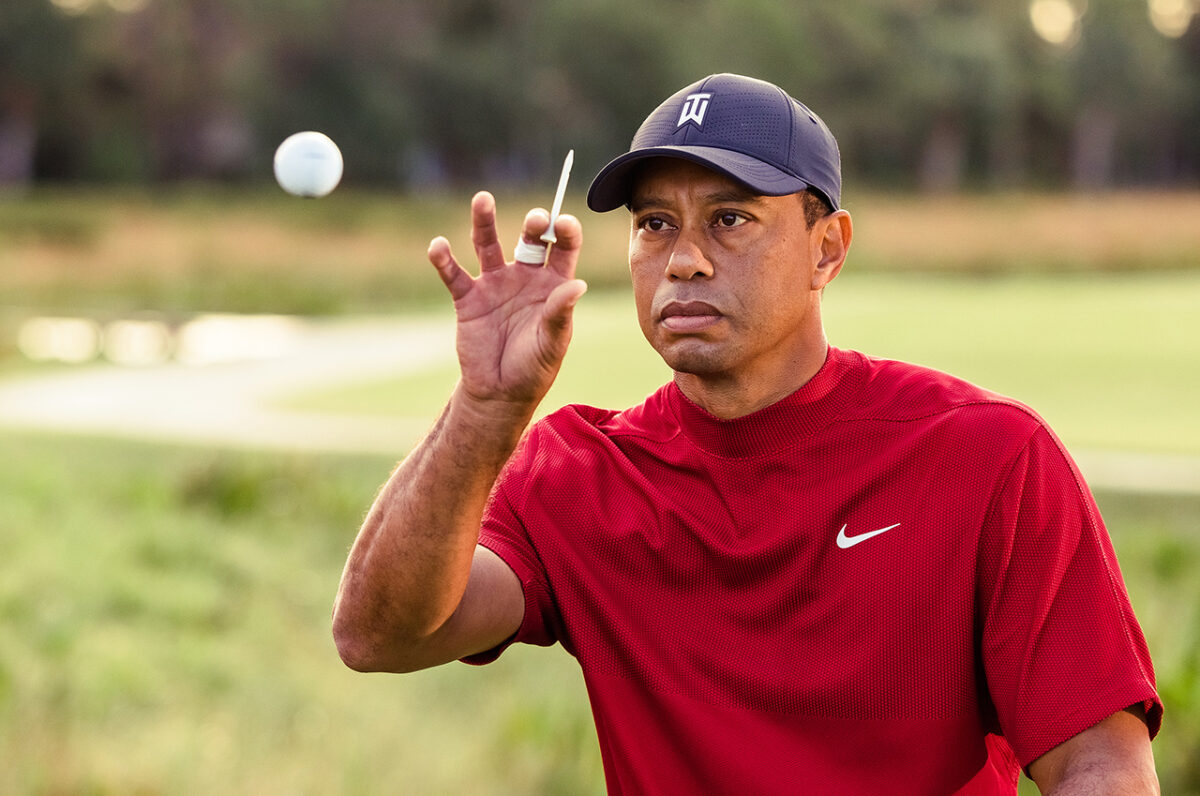PONTE VEDRA BEACH, Fla. – Growing up amid the prairies of Kansas, Gary Woodland was a standout on the baseball field and basketball court.
Held his own on the golf course, too. But back in the mid-1990s, while his proud community of Topeka knew what he could do with a baseball and a basketball, very few had any idea what he could do with a golf ball.
“Golf wasn’t cool. And I played by myself,” Woodland said.
Then Tiger Woods exploded off the TV screen in the 1997 Masters.
“I was going to be 13 and it was the first golf tournament I ever paid attention to,” said Woodland, who has gone on to win four PGA Tour titles, including the 2019 U.S. Open. “I got the VHS tape; I’ve watched it 400 million times.
“It was a turning point for me. Tiger made the game cool. He was athletic, he was exciting, he could send the golf ball a mile. It’s not like I had to hide playing golf. But all of a sudden, I didn’t have to associate with just being a basketball player or a baseball player. I could associate with being a golfer. And that was cool.
“And Tiger did that.”
[vertical-gallery id=778090281]
He did so much more. The public got a glimpse of Woods for the first time when as a 2-year-old the mixed-race kid from a middle-class background waddled onto the stage of The Mike Douglas Show and wowed Bob Hope, Jimmy Stewart and the host by hitting golf balls into a net.
Less than 20 years later he was must-watch TV and became the needle that moved all things golf. Purses significantly rose – Woods led the Tour’s money list in 1997 with just over $2 million; the winner of this week’s Players earns $3.6 million. TV ratings spiked. Madison Avenue perked up. Wardrobes changed – think the swoosh. Power became the game’s calling. Minorities began to think they could have a place in the game.
And youngsters across the globe have tried to follow his lead ever since while his peers have followed him into the gym.
Woods didn’t just leave an impression on the old stately game, he changed it. Testament to his brilliance inside and outside the gallery ropes takes place Wednesday night when he steps on to the stage at PGA Tour headquarters for his induction into the World Golf Hall of Fame, where he’ll be introduced by his 14-year-old daughter, Sam.
“He’s done everything for the game,” said six-time Tour winner and 2014 FedEx Cup champion Billy Horschel. “There isn’t one aspect of the game that he hasn’t had his hand in in changing.”
Woods’ considerable feats on courses the world over will be well documented on his plaque, although there won’t be enough space. There are the record-tying 82 PGA Tour titles, 15 major championships, a record 142 consecutive cuts made, a record 683 weeks – 13 years – atop the official world rankings, a record 11 PGA Tour Player of the Year Awards.
[listicle id=778081998]
He won the 2000 U.S. Open by 15, the historic 1997 Masters by 12, the 2000 Open Championship by 8, the 2006 PGA Championship by 5. When he won the 2000 Open on the Old Course in St. Andrews, Scotland, the Home of Golf, he became, at 24, the youngest to complete the career Grand Slam.
Less than a year later, he won the 2001 Masters, becoming the only player to ever win four consecutive professional majors. It’s better known as the Tiger Slam.
And he won on a broken leg at the 2008 U.S. Open and captured his fifth Masters in 2019 following spinal fusion surgery (his fifth back surgery, to go along with five surgeries on his left knee).
And Woods will tell you the best times he’s ever had on the golf course since turning pro came the past two years when he played with his 13-year-old son, Charlie, in the PNC Championship.
[vertical-gallery id=778191616]
Off the course, his heralded handiwork can be seen in the TGR Learning Lab on 1 Tiger Woods Way in Anaheim, California, a brick-and-mortar behemoth of educational opportunity created by his foundation, which has raised millions over the years for numerous charities. Opened in 2006, the Learning Lab is the backbone of his goal to provide kids a safe place to learn, explore and grow.
Talk to those kids and they’ll give you different reasons why he’s a Hall of Famer.
As time has marched on, and the injuries have taken their toll, a different Woods has emerged as he’s become a statesman of the game. The once relentlessly intense player who kept to himself and kept his thoughts close to the vest for most of his career has expanded his audience and been freer with his advice and guidance.
He has taken to many youngsters in the game, including Justin Thomas and Rickie Fowler. The players were excited and proud to play for him when he was a playing captain for the USA’s victorious 2019 win in the Presidents Cup.
More: World’s top-five players all under age 30 for the first time
Woods is still recovering from a near-fatal, one-car accident in February 2021 in the Los Angeles area. If he’s to return to the PGA Tour, he will do so on a limited basis. We were lucky to see Woods at his zenith. We’d be lucky to see him there again.
His peers sure hope so.
[listicle id=778184161]
“He came out dominating. It was just a different ballgame. And what he’s done for the Tour is undeniable,” 2012 FedEx Cup champion and nine-time Tour winner Brandt Snedeker said. “The Tour wouldn’t be in the position it’s in without him.
“He’s been an unbelievable icon of sport, and to have him in golf has been extremely important for the sport’s growth. Every player out here on Tour owes him a huge debt of gratitude.”
[mm-video type=playlist id=01es6rjnsp3c84zkm6 player_id=01evcfxp4q8949fs1e image=https://golfweek.usatoday.com/wp-content/plugins/mm-video/images/playlist-icon.png]
